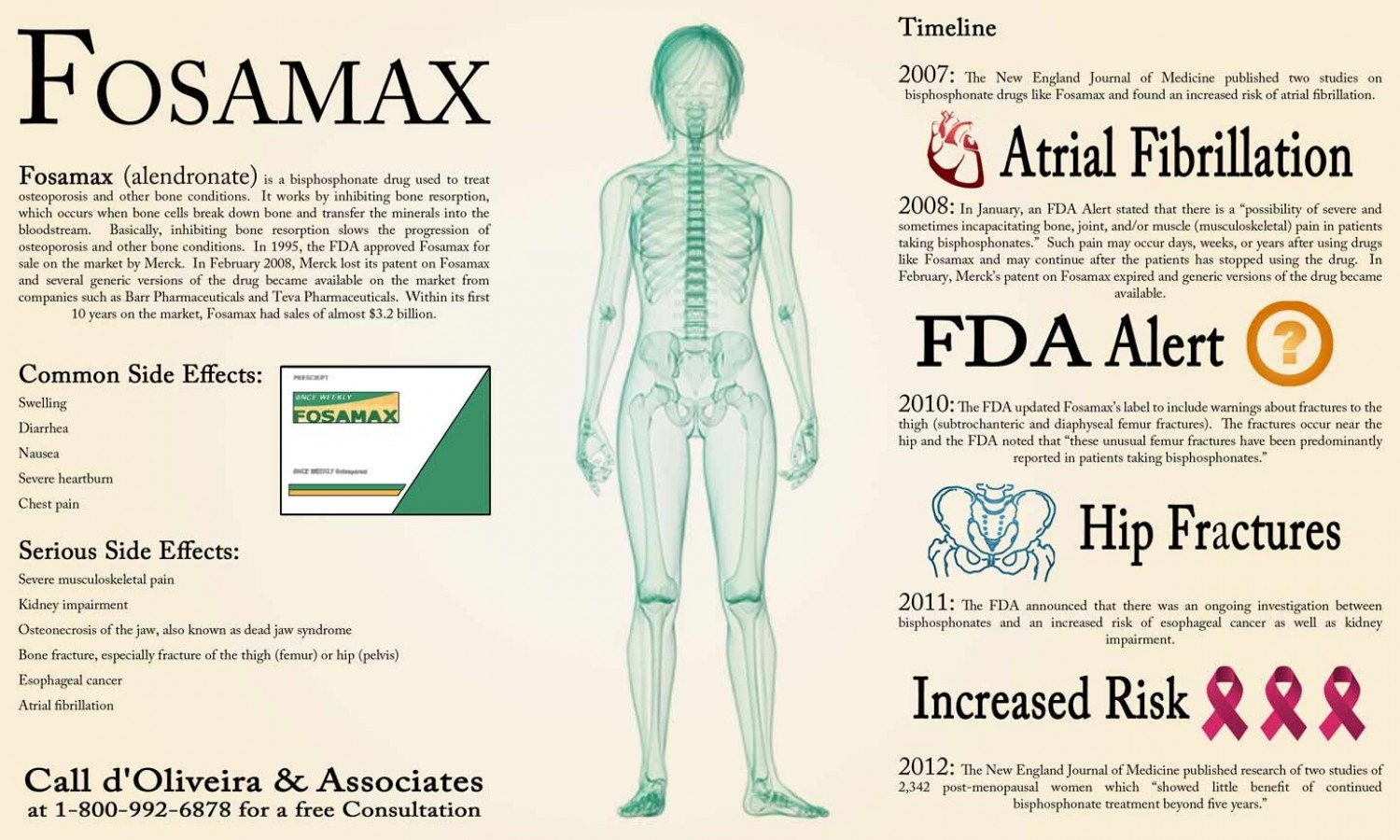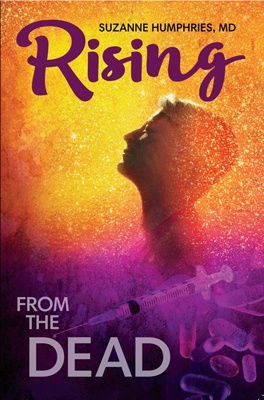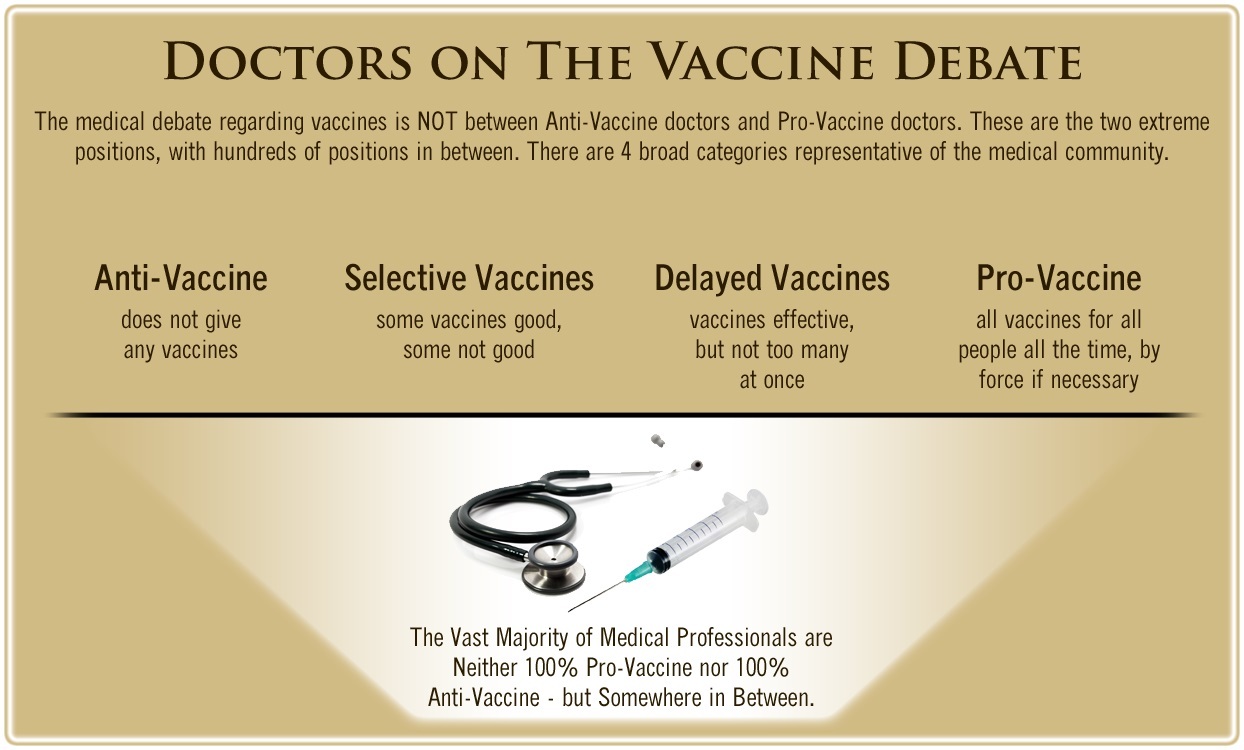Duty to Warn: Truth-telling Statistics that Big Pharma and the CDC Never Report to Physicians or Patients
by Gary G. Kohls, MD
It has been over a decade since I came to the realization that the entire profession of medicine had been bamboozled by the propaganda coming from the Big Pharma drug and vaccine maker, Merck & Company, that its so-called “fracture-preventative” drug Fosamax had defrauded us doctors and our patients by falsely claiming a “50% efficacy rate” in the prevention of bone fractures in osteopenic/osteoporotic women.
I had always been suspicious of pharmaceutical sales reps and the Big Pharma corporations that they worked for, and I had wondered exactly where they got the 50% effectiveness figure.
So I finally got around to actually digging into and studying the clinical study statistics that were in the FDA-approved product insert that all drug and vaccine makers are forced to publish and include with the product (and which only a few physicians ever take the time or inclination to read).
Lying buried among the large number of boring statistical verbiage were printed the numbers that revealed that the 50% efficacy rate for osteopenic patients who took Fosamax for four years was actually a deceptive relative risk reduction (RRR) figure that drastically deceptively over-stated the effectiveness of the drug.
By doing a little math, I understood that the honest truth of the matter was that patients who took the drug for four years had a miniscule 1-2% absolute risk reduction (AAR) in the incidence of fractures, which is a much more realistic figure that Merck, being a sociopathic entity that is inclined to tell half-truths or outright lies, chose not to use in its advertisements.
It is a fact that being truthful in the drug or vaccine industry is an impediment to selling product, because they would be admitting they were selling a lousy, fraudulent, relatively ineffective or dangerous drug or vaccine.
The Fosamax Fraud
Incidentally Merck – and who knows how many Fosamax-prescribing doctors – are being sued by thousands of patients who have been damaged by the drug and, true to Merck’s sociopathic nature, the company continues to use delaying tactics in legally settling the 4,115 lawsuits against it from patients who suffered Fosamax-induced bone fractures.
We uninformed physicians, thanks to Merck’s deceptive tactics, ignorantly but energetically prescribed the drug for decades, thus inadvertently also deceiving our patients, some of whom suffered the permanently devastating disease called (Fosamax-induced) osteonecrosis of the jaw, an incurable disease that only came to light when thousands of dentists did otherwise standard dental extractions on Fosamax patients and then found that the extraction sites never healed, sometimes actually resulting in incurable infections, chronic pain and even fractures.
1,200 of those osteonecrosis patients are still waiting for compensation a decade or two after the connections were proven and lawsuits were filed. Sociopathic entities like Big Pharma’s drug- and vaccine-making corporations are in the habit of making cunning use of their lawyers, cruelly threatening their victims, delaying court hearings, trying to settle out of court with low-ball dollar figures and then refusing to pay court-ordered settlements until the plaintiffs give up or die. See more on the Fosamax lawsuits.
So it has come as no shock to me to discover that every Big Pharma vaccine maker has been using the same deceptive relative risk reduction statistics that Merck (and every other Big Pharma drug-maker) was using back when Fosamax was the darling money-maker of the drug and bone-imaging industries.
To really understand the Fosamax Fraud, go to my Duty to Warn column on the subject.
Fool Me Once, Shame on You; Fool Me Twice, Shame on Me
In other words, Big Pharma/BigVaccine is still successfully bamboozling us doctors and patients (as well as Big Media, the CDC, the FDA, the AMA, the AAP, the APA, the AAFP, the NIH, the NIMH, Wall Street and our politicians) with the old deceptive tactic of using relative risk reduction statistics about vaccine efficacy rather than honestly telling us the more truthful absolute risk reduction figures whenever they are rolling out their newest – and increasingly unaffordable – vaccines.
Therefore, I devote the remainder of this column to reporting some excerpts from the internet and end with some examples of published studies from courageous researchers who have gone up against the drug industry and reported the important statistic that we should all demand to know when a vaccine is being sold to us.
That taboo figure is the NNV (the Number Needed to Vaccinate), which tells prospective vaccinees how many patients will have to be injected in order for one of them to be benefitted. As will be explained below, in order to arrive at the NNV figure, the AAR (absolute risk reduction) statistic will have to be calculated, which never happens in the mainstream medical journals that publish Big Pharma’s clinical vaccine studies.
Immediately below is some of the pertinent statistical information that is never available in the Big Pharma/Big Vaccine publications. I have paraphrased some of the information from various sites.
_____________________________________________________________________________
What is Relative Risk?
The relative risk of something happening is where you compare the odds for two groups against each other. It is usually reported as a percentage (like Fosamax allegedly reducing the risk of bone fracture by 50% if the drug is taken for four years). Although relative risk does provide some information about risk, it doesn’t say anything about the actual odds of something happening; on the other hand, absolute risk does.
Relative Risk Reduction (RRR)
The RRR is a statistic indicating how much risk is reduced in an experimental group compared to a control group. It is always a gross over-exaggeration of the actual efficacy of a treatment, and is therefore favored by drug and vaccine corporations and clinics and physicians who want to promote a product. The AAR statistic is, in contrast, a taboo subject, because it is too truthful.
What is Absolute Risk Reduction (AAR)?
Absolute risk reduction is the absolute difference in outcomes between a control group and the group receiving treatment. The percentage tells you how much the risk of something happening decreases if a certain intervention happens.
What is the NNT?
One can see how using the RRR to describe the potential effect of a treatment would be enticing, particularly if someone wanted to exaggerate the potential benefit of a treatment.
This is where the NNT becomes most valuable: as a tool to standardize communication. The NNT only uses the ARR and therefore when patients and doctors use the NNT there is no deception or exaggeration of impact. The concept of the NNT is highly intuitive, and once trained in its use, easy for most to understand.
The core value of the NNT is its straightforward communication of the science that can help us understand the likelihood that a patient will be helped, harmed, or unaffected by a treatment.
The Number Needed to Vaccinate (NNV) is similar to the NNT, in that it says, in one phrase, how many patients will need to be vaccinated for one patient to benefit. The larger the number, the worse the efficacy of the vaccine (or drug). A few examples are listed below:
Assorted Numbers Needed to Vaccinate (NNV) Data
Many of these examples come from the literature, including some from this source. Statistics such as these can be expected to vary according to location, age, chronic illnesses, nutritional status, etc.
Googling Number Needed to Vaccinate is useful, although the CDC references should be viewed with a large amount of skepticism, because the close financial and collegial relationships between the CDC and Big Pharma create huge conflicts of interest.
NNV for Flu Vaccine to Prevent One Hospitalization(< 4 years of age) = 1852
Quantifying benefits and risks of vaccinating Australian children aged six months to four years with trivalent inactivated seasonal influenza vaccine in 2010
1852 children would have to be vaccinated to avoid one hospitalization due to any strain of circulating influenza (2009).
The authors also estimated that, for every hospital admission due to influenza prevented, vaccination with Fluvax or Fluvax Junior in 2010 may have caused two to three hospital admissions due to febrile convulsions.
________________________________________________________________________
NNV for Infant Flu Vaccine to Prevent One Hospitalization = >4,255
Pediatrics, 120 (3) (2007), pp. 467-472
Childhood influenza: NNV (number needed to vaccinate) to prevent 1 hospitalization or outpatient visit
E.N. Lewis, et al
4255 to 6897 children ages 24–59 months of age would have to be vaccinated for influenza to prevent one hospitalization.
________________________________________________________________________
NNV for Shingles/Herpes Zoster vaccination for over 70 years = 231
UCLA Dept. of Med. 2007 Feb 20.
Live attenuated varicella-zoster vaccine: Is it worth it?
Skootsky S.
175 adults over 60 years of age would have to be vaccinated to prevent 1 episode of Herpes Zoster.
231 adults 70 years of age or older would have to be vaccinated to prevent 1 episode of Herpes Zoster.
________________________________________________________________________
NNV for Pneumococcal vaccine in Older Adults = 5,206
BMC Infectious Diseases 2008:53
The impact and effectiveness of (23 valent) pneumococcal vaccination in Scotland for those aged 65 and over during winter 2003/2004
- John D Mooney, et al
The NNV for adults > age 65 was 5206 (4388 – 7122) per IPD (invasive pneumococcal disease) case prevented.
The calculated VE (vaccine efficacy rate) was 61.7%, thus exposing the lack of utility of the fraudulent VE statistic.
____________________________________________________________________________
NNV for Tuberculosis Vaccine (Ireland) = 646
Eur Respir J, 10 (3) (1997), pp. 619-623
Neonatal BCG vaccination in Ireland: evidence of its efficacy in the prevention of childhood tuberculosis
P. Kelly, et al –
646 children had to be vaccinated with Ireland’s neonatal Bacillus Calmette-Guérin (BCG) vaccine to prevent one case of tuberculosis in 1986 (the NNV dropped to 551 in 1991).
_____________________________________________________________________________
NNV for Gardasil in Sexually Inactive 12 Year-old Girls= 9,080
CMAJ. 2007 Aug 28; 177(5): 464–468.
Estimating the Number Needed to Vaccinate to Prevent Diseases and Death Related to Human Papillomavirus Infection
Marc Brisson, PhD, et al
_____________________________________________________________________________
NNV for Group B Meningococcal Vaccine = >33,000
BMC Infect Dis, 12 (1) (2012), p. 202
Epidemiology of serogroup B invasive meningococcal disease in Ontario, Canada, 2000 to 2010
V Dang, et al
33,784 – 38,610 infants would need to be vaccinated in order to prevent one case of serogroup B invasive meningococcal disease.
_____________________________________________________________________________
NNV to Prevent one Health Adult from Experiencing Influenza = 71
Cochrane Review Feb 1, 2018
Vaccines to prevent influenza in healthy adults
Demicheli V, et al
71 healthy adults need to be vaccinated to prevent one of them experiencing influenza,
N Engl J Med 2003 Oct 2;349(14):1341-8.
A trial of a 9-valent pneumococcal conjugate vaccine in children with and those without HIV infection.
Klugman, KP, et al
In the South African trial conducted in the urban township of Soweto, vaccination of nearly 20,000 infants resulted in only 31 fewer cases of invasive pneumococcal disease in the overall population and in only 13 fewer cases among HIV-negative children, although the VE against invasive pneumococcal disease was 83%.
_____________________________________________________________________________
NNT Data for Statin Treatments
The following NNTs are for low risk patients who took statins for 5 years (and whose only risk was elevated cholesterol but no documented coronary artery disease) compared to patients of similar low risk that did not take statins:
The NNT to prevent one heart attack: – 104
The NNT to prevent one stroke: 154
The NNH (number needed to harm) for developing rhabdomyonecrosis of the heart = 10
Cochrane Database Syst Rev. 2011 Jan 19;(1):CD004816
Statins for the primary prevention of cardiovascular disease
Taylor F,,et al
See also: Statin Drugs Given for 5 Years for Heart Disease Prevention (Without Known Heart Disease)
Summary:
104 patients would have had to take statins for five years for one case of heart attack to have been prevented.
154 patients would have had to take statins for five years for one case of stroke to have been prevented
There was no difference in all-cause mortality between the two groups. In other words, there was no improvement in mortality statistics by taking statins.
However, for patients taking statins for five years 2% of them (1 out of every 50) developed diabetes (significantly more that the no statin group).
For patients taking statins for five years, 10% of them (1 out of every 10 developed significant statin-induced rhabdomyolysis (more accurately-named rhabdomyonecrosis, which is the death necrosis of muscle tissue that involves both cardiac and peripheral muscles). 10% is highly likely to be an underestimate by physicians who generally don’t make the diagnosis. Therefore 10 is an artificially low estimate.
See this source for a list of the studies that back up the statin figures.
Comment on this article at HealthImpactNews.com.
About the Author:
Dr Kohls is a retired physician from Duluth, MN, USA. He writes a weekly column for the Duluth Reader, the area’s alternative newsweekly magazine. His columns deal with the dangers of American fascism, corporatism, militarism, racism, malnutrition, Big Pharma’s psychiatric drugging and over-vaccination regimens, and other movements that threaten the environment, prosperity, democracy, civility and the health and longevity of the planet and the populace.
Many of his columns are archived at Global Research, Duluth Reader, and Transcend Media Service.
Leaving a lucrative career as a nephrologist (kidney doctor), Dr. Suzanne Humphries is now free to actually help cure people.
In this autobiography she explains why good doctors are constrained within the current corrupt medical system from practicing real, ethical medicine.
One of the sane voices when it comes to examining the science behind modern-day vaccines, no pro-vaccine extremist doctors have ever dared to debate her in public.
Medical Doctors Opposed to Forced Vaccinations – Should Their Views be Silenced?
One of the biggest myths being propagated in the compliant mainstream media today is that doctors are either pro-vaccine or anti-vaccine, and that the anti-vaccine doctors are all “quacks.”
However, nothing could be further from the truth in the vaccine debate. Doctors are not unified at all on their positions regarding “the science” of vaccines, nor are they unified in the position of removing informed consent to a medical procedure like vaccines.
The two most extreme positions are those doctors who are 100% against vaccines and do not administer them at all, and those doctors that believe that ALL vaccines are safe and effective for ALL people, ALL the time, by force if necessary.
Very few doctors fall into either of these two extremist positions, and yet it is the extreme pro-vaccine position that is presented by the U.S. Government and mainstream media as being the dominant position of the medical field.
In between these two extreme views, however, is where the vast majority of doctors practicing today would probably categorize their position. Many doctors who consider themselves “pro-vaccine,” for example, do not believe that every single vaccine is appropriate for every single individual.
Many doctors recommend a “delayed” vaccine schedule for some patients, and not always the recommended one-size-fits-all CDC childhood schedule. Other doctors choose to recommend vaccines based on the actual science and merit of each vaccine, recommending some, while determining that others are not worth the risk for children, such as the suspect seasonal flu shot.
These doctors who do not hold extreme positions would be opposed to government-mandated vaccinations and the removal of all parental exemptions.
In this article, I am going to summarize the many doctors today who do not take the most extremist pro-vaccine position, which is probably not held by very many doctors at all, in spite of what the pharmaceutical industry, the federal government, and the mainstream media would like the public to believe.







